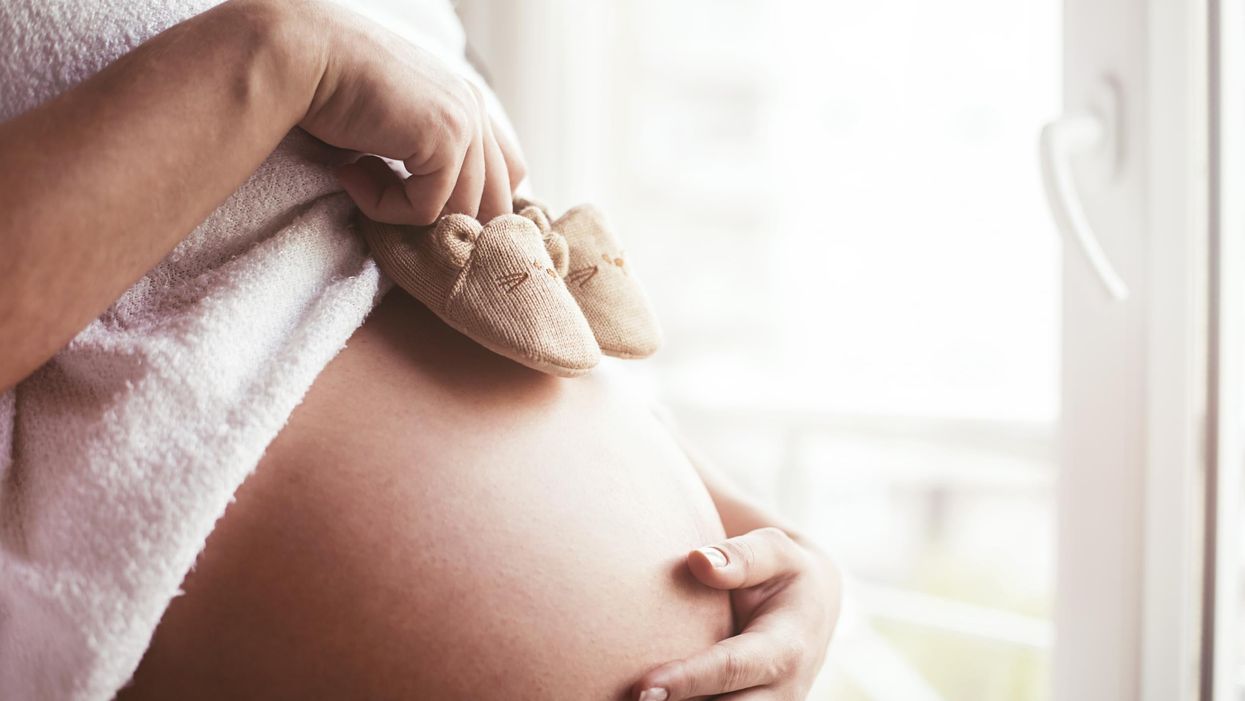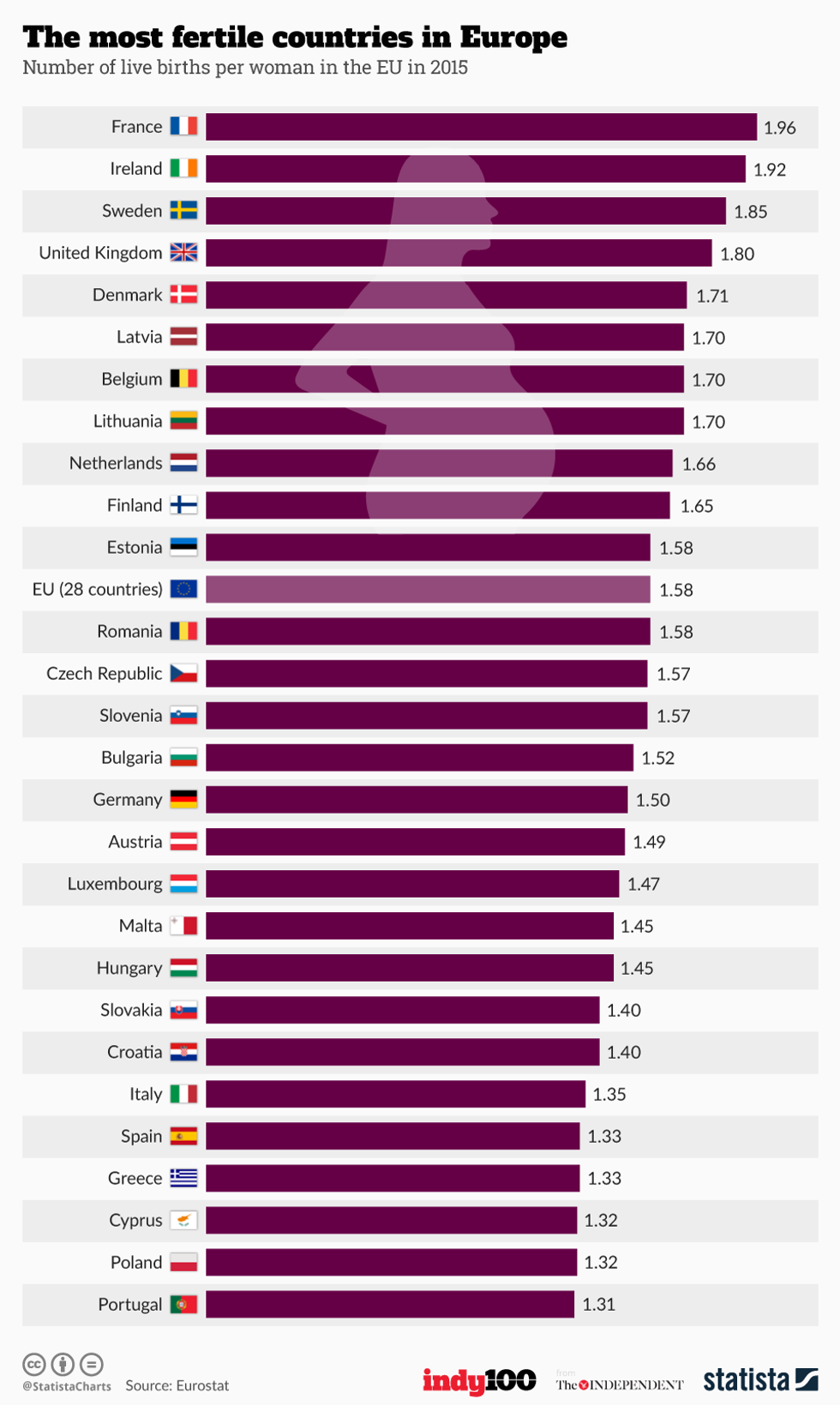News
Harriet Marsden
Mar 19, 2017

Picture:
istock / Xesai
From the 1960s to the millennium, fertility rates in the EU were steadily in decline.
But at the turn of the century, the birthrate suddenly rose and continued to do so until 2010, when it fell slightly then levelled out.
The consequences of a low fertility rate, e.g. an ageing population with its inherent strain on health and welfare systems, continue to loom large in the minds of developed nations.
In order to avoid a population disaster, scientists suggest that European countries need to start having more children - and fast.
The data suggests that the average number of children born across the EU was only 1.58 per woman in 2015.
That's remarkably low, considering that the global fertility rate is approximately two births per woman for industrialised countries - and between 2-3.5 for developing nations.
These are, according to Statista, the countries in Europe where women had the most babies in 2015...

You might have expected Scandinavian and Nordic countries to have lower birthrates, while Catholic countries and poorer nations have more children.
But the data actually contradicts that assumption...
Above EU average
- France - 1.96
- Ireland - 1.92
- Sweden - 1.85
- United Kingdom - 1.80
- Denmark - 1.71
- Latvia - 1.70
- Belgium - 1.70
- Lithuania - 1.70
- Netherlands - 1.66
- Finland - 1.65
- Estonia - 1.58
- Romania - 1.58
Below EU average
- Czech Republic - 1.57
- Slovenia - 1.57
- Bulgaria - 1.52
- Germany - 1.50
- Austria - 1.49
- Luxembourg - 1.47
- Malta - 1.45
- Hungary - 1.45
- Slovakia - 1.40
- Croatia - 1.40
- Italy - 1.35
- Spain - 1.33
- Greece - 1.33
- Cyprus - 1.32
- Poland - 1.32
- Portugal - 1.31
More: These are the jobs to avoid if you hate being bored
More: The average age European women have their first child, mapped
Top 100
The Conversation (0)













